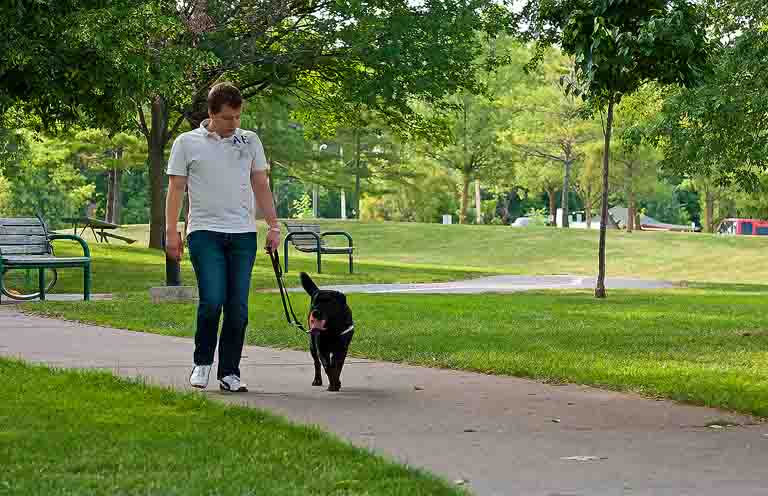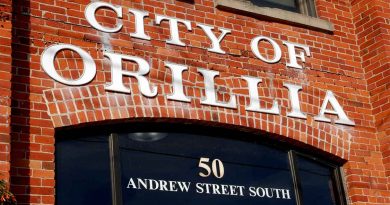Measuring Up On Climate Action
By Gord Ball – Special to SUNonline/Orillia
When the Intergovernmental Panel on Climate Change (IPCC) recently issued the second part of the 6th Assessment Report: Climate Change 2022: Impacts, Adaptation and Vulnerability, the Working Group II Contribution, the Secretary-General of the UN, Antonio Guterres, called it a “code-red for humanity” due to human-induced climate change.
“We are on a pathway to global warming of more than double the 1.5-degree limit agreed in Paris,” said Guterres. “Some government and business leaders are saying one thing but doing another… Climate activists are sometimes depicted as dangerous radicals. But the truly dangerous radicals are the countries that are increasing the production of fossil fuels. Investing in new fossil fuels infrastructure is moral and economic madness.”
Canada is not immune. Our cities and provinces have seen first-hand the effects listed in the report: heat waves, rising sea levels, fires and floods.
The gist of the IPCC report? We need to do a lot better. The report said that keeping warming to 1.5° C above pre-industrial levels is impossible without massive cuts to carbon emissions. Over 1,000 municipalities around the world have joined the initiative to reach Net Zero in carbon emissions (caused mainly by burning fossil fuels) and to develop climate plans in line with a liveable future. Orillia has joined the movement with its recently announced Climate Change Action Plan.
The National Climate League (NCL) is a yearly project developed by the Climate Reality Project Canada. First launched in 2018, its purpose is to encourage municipalities to reach Net Zero by or before 2050. The 2021 standings of the NCL in the fourth annual report will enable municipalities to measure their progress, compare it with others across the country, and lead to more ambitious targets across municipalities in Canada.
Orillia is on NCL’s list of 66 cities. How are we doing? Where do we stand? Where would we like to stand?
Of 16 measurable indicators in the NCL data (indicators include air quality, sustainable buildings, local agriculture, urban greenness, shared vehicles, electric vehicle charging stations), a few stand out as indicators especially relevant to our city.
Energy mix – Thanks to abundant running water in our region, we have a largely sustainable source of electricity generation, reducing our dependence on non-renewable fossil fuels for our supply of electricity. Currently, Ontario’s mix of energy comes from several sources: hydro 24.4%, nuclear 56.8%, natural gas 6.3%, solar PV 2.4%, wind 8.7% and biofuel .5% and local distribution companies .9%. Orillia Power owns and operates six waterpower generating stations and seven rooftop solar sites, with three waterpower stations that have been in service for decades. So our local energy from Orillia Power is largely non-fossil fuel. However, our power goes into the Ontario grid and is mixed with “dirtier” sources. Orillia’s Climate Change Action Plan proposes to increase local renewables as a key mitigation strategy.
But there’s no question more must be done: the development of community-level wind, solar and hydrogen energy generation projects, electrifying buses and vehicles of all types, and reducing the use of natural gas for heating in our housing. Provincially, the government must work to eliminate the use of gas plants for electricity generation. There is danger that current Ontario government policies may see a return to natural gas instead of renewables.
Bike lanes – Of 8 small cities, Orillia ranked 4th best, with 104 km of bike trails per 100,000 people (a standard comparable measure). The infrastructure is in place, and just needs to be integrated into our transit system (e.g. more bike racks) and downtown spaces.
Bicycles are vastly more affordable to purchase and to maintain compared to motorized vehicles, and their wear-and-tear on roads is insignificant, reducing road maintenance costs. Separation of the different streams of traffic into motorized, bicycle, and pedestrian offers a safer journey, and the likelihood of opting for active transportation is increased. Bike lanes provide a safe, affordable, low-maintenance, quieter, healthier, environmentally- sustainable option. While Orillia is doing fairly well in this regard, there’s much more to do.

Walkability – This calculation is based on the proximity of households to services and amenities, and assigns cities a value between 0 and 100, where 100 is the most walkable. Vancouver scores 80 on this scale, making it Canada’s most walkable city in the NCL Standings. Orillia’s walkability score is 40, tying with Yellowknife and Charlottetown in the small city section. It is notable that small cities have lower walk scores than larger cities, presumably because of lower densities as a result of relatively more sprawl. Orillia’s emerging Official Plan must minimize unnecessary urban sprawl.
Open public spaces, and services such as healthcare and education, should be within a reasonable walking distance to be considered pedestrian friendly. Based on a study carried out by the Institute for Transportation and Development Policy, researchers have found that people will use the infrastructure that you give them: because we have built cities for cars, it is normal that the majority of residents drive daily. However, if we start shifting the focus in urban planning from cars to pedestrians, with special care and attention to accessibility, people will ultimately change their habits and live longer and healthier lives. We should aim to have new builds that feature walkable access to amenities.
Affordable housing – Access to affordable housing (housing that costs less than 30% of total household before-tax income) is considered by many to be a basic human right. Ensuring that everyone has a place to live safely and with dignity is a critical factor in the fight against climate change – and for climate justice. When people’s basic housing needs are met, they are able to think about long-term goals for themselves and society, exert their power as citizens, and influence decisions related to greenhouse gasses.
The NCL reports on the average rent prices of all housing sizes. Housing in Orillia is less affordable now than in 2019, but still scored 4th among small Canadian cities in terms of affordability with only a 1.15% increase. By comparison, Charlottetown’s average rental costs increased by 4.67% and Saint Lambert’s by 11.75%. Yet a 2016 Statscan survey showed that in 2015, 18.9% of homeowners in Orillia were spending 30% or more on shelter costs, while a whopping 51.8% of tenant households spent 30% or more. With the rise in housing costs over the intervening 7 years, it’s doubtful that these 2015 numbers have changed for the better.
Orillia can become more sustainable if the city monitors certain key indicators and measures changes such as transit trips, waste collected, number of building retrofits, and others.
While valuable, NCL data does not tell the whole story. Sustainable Orillia is developing a made-in-Orillia State of Sustainability Report with expanded indicators that will provide Orillia with measurable ways to determine and document progress. With regularly updated and accurate information, Orillians will know how we are doing, can monitor changes, and determine achievable targets.
Sustainable Orillia wants residents to be informed, to believe the information, to feel concerned about our collective future, and to act accordingly.Orillia now has a climate change action plan called Orillia’s Climate Future. It serves as a road-map for Council and staff, and also as an ambitious challenge for city residents.
For the four hundred people, mostly youth, who assembled outside City Centre on Friday, Sept. 27, 2017 as part of the Fridays for Future strikes, the plan is an overdue call to action. Mayor Steve Clarke pleaded with the crowd then not to let up, to keep the pressure on elected officials to raise our collective ambition to protect our present and our future. Almost five years later, the need for this pressure remains.




